Getting my Indiana Jones on in Petra
You’ll undoubtedly feel like you’ve stepped into an Indiana Jones movie as soon as you set foot in the ancient city of Petra. With its deep canyons, coloured sandstone temples and rock cut tombs, Petra will make you feel like there could be secret treasure hidden somewhere in that valley.
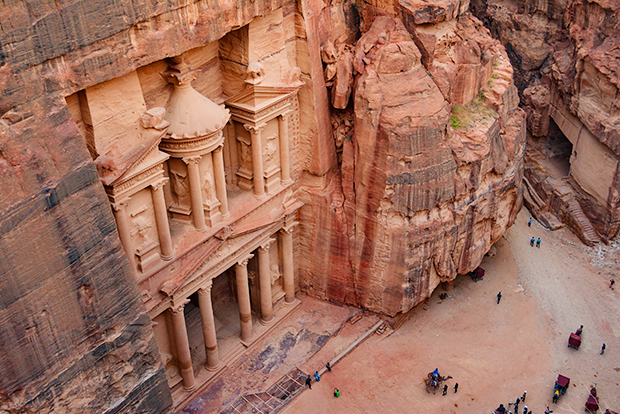
Petra is located about 250km south of Jordan’s capital Amman and is also known as the Rose City due to the rose-red colour of the sandstone. The exact date when Petra was built is not known, but research has uncovered that it was a bustling city from the 1st century BC until an earthquake in the 4th century paved the way for the city to be abandoned except for the local Bedouin people. The city became known outside of Jordan in the early 1800s when a Swiss explorer ‘rediscovered’ Petra and started promoting the city. Petra became a UNESCO World Heritage Site in 1985, and it is now a popular tourist attraction and essentially what people come to Jordan to see. I was one of them!
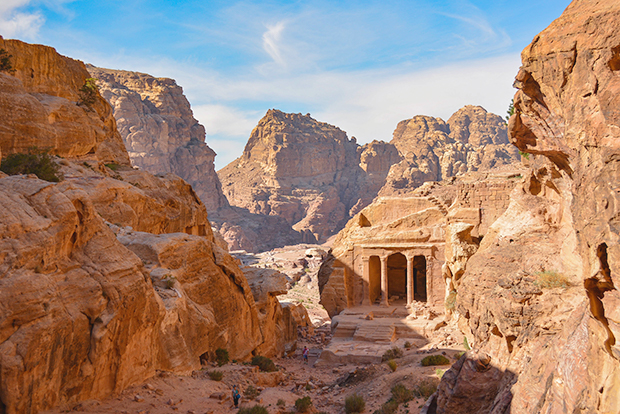
You’ll be fascinated by the buildings in the city, many of which were carefully carved from the fine rose red sandstone, including the stunning Treasury temple. You enter Petra via the Siq – a beautiful kilometre long canyon that was created due to fractures in the earth, primarily caused by earthquakes. On the entry into Petra via the Siq, you’ll see several carvings on the canyon walls, as well as a channel used to carry water into the city.

The canyon winds its way until you are smack bang in front of the Treasury building – also known as Al Khazna. The Treasury is 39 metres high and is decorated with columns and figures. Below the Treasury are a series of tombs. It’s best to get to the Treasury early to avoid the crowds. You can ride camels in front of the Treasury for a fee. Yes, it’s a tourist trap, but it’s a pretty good photo opportunity!
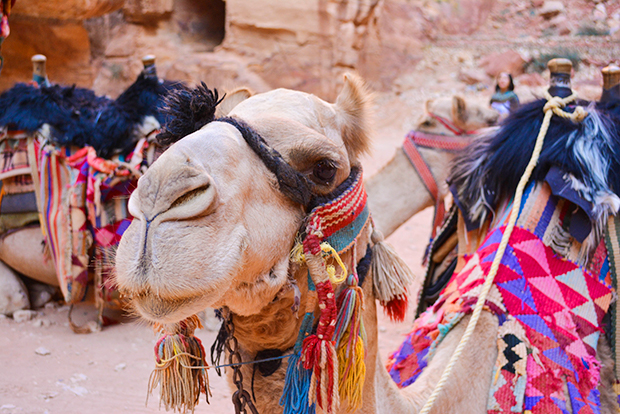
The Treasury is Petra’s most famous building due to its location at the start of Petra and because it remains in such good condition as a result of being shielded by the high canyon walls. From the Treasury, head right to take in the rest of the Petra. Here are a few of the other main sights.
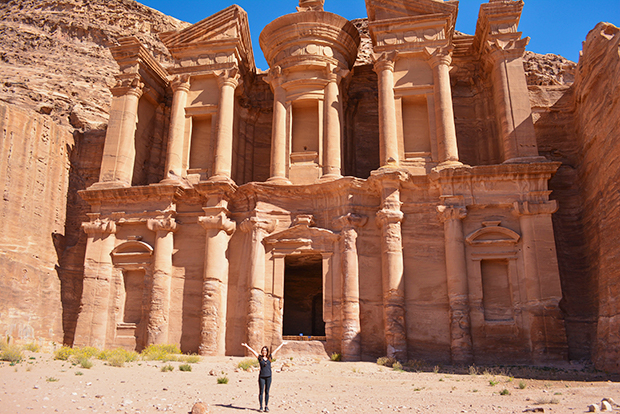
The Monastery
The Monastery (Ad-Deir) was my next favourite part of Petra after the Treasury. But I had to work for it – up 850 steps to be exact. But it was worth it – not only for the views on the way up of the valley but also the beautiful Monastery.
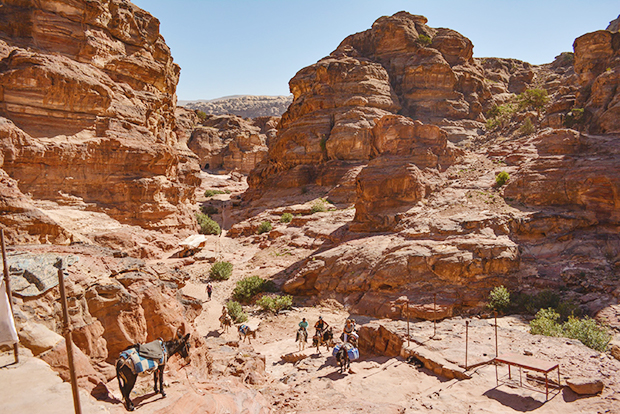
If steps aren’t your favourite, it’s possible to take a donkey up. Prices are negotiable. The Monastery is one of Petra’s most significant monuments and is 48 metres high. It is believed to date back to the early 2nd century AD. The Monastery is reasonably well preserved today although the bottom half has deteriorated by being blasted by windblown sand. But it doesn’t ruin the impressiveness of this building carved into the cliffs. Take your time admiring the view of the Monastery. You can take a seat at the adjacent café and grab a drink. While you’re up at the Monastery site, make sure you venture a bit further to the nearby viewpoints. You’ll see signage showing you the way. The best view I found was the one following the signs to the Grand Canyon of Petra and the ‘Best View’. From here you’ll look across the Wadi Araba desert and into a spectacular canyon.

Petra’s tombs
It seems everywhere you look in Petra; there are tombs cut into the rock – looking like windows set into the mountain, this was one of the most intriguing parts of Petra. Petra was the capital of the Nabataean people – who used to bury their dead in tombs cut into the mountains. You’ll see most of the tombs on the Street of Facades near the Treasury on the Main Trail.
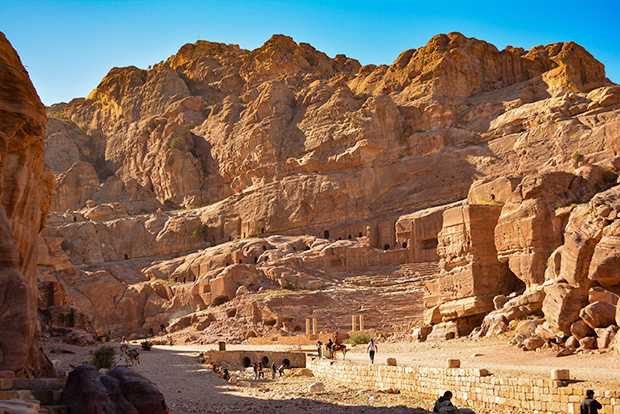
The High Place of Sacrifice
Reaching the High Place of Sacrifice is also a hot, sweaty climb – but the views at the top are worth it. It takes about an hour to reach the High Place of Sacrifice from the bottom of the Monastery trail – but of course, you have to traverse a series of steep steps to get there. Take care here as some of the rock cut steps can be slippery – worn down by many feet. Once at the top, you’ll reach a sacrificial platform and an altar – as well as a great view over Petra.
Petra at night
To see Petra from a different perspective, you can also head along to Petra at night. About 1500 candles are lit along the Siq and outside the Treasury temple, and then you are treated to local Bedouin music and tea. The show runs three times a week on Monday, Wednesday and Thursday from 8.30pm. Tickets cost an additional fee on top of the Petra day entrance passes.

Things You Should Know:
- Petra is a large site, and you may need more than one day to see it all. You can buy one, two or three day passes to visit Petra. You’ll get a discounted ticket price if you’re staying at least one night in Jordan rather than just taking a day trip from Israel.
- You’ll need to bring your passport to buy your ticket.
- It’s best to start early to see Petra beat the crowds and also the heat. Some of the trails are very exposed, so you’ll want to do hikes like the Monastery and the High Place of Sacrifice early in the day if you can. Petra is open from 6 am and closes at sunset.
- You’ll do lots of walking in Petra so bring you’re walking shoes, sunscreen and a hat. I walked 20km in my one day at Petra. You’ll also need plenty of water. Bring at least two litres with you. You can buy water inside Petra from stands run by the local Bedouin people, but stocks start running low by the end of the day so plan ahead.
- If some of the stairs are too much for you in Petra, you can pay for a donkey to take you around. Prices are negotiable.
- There are sometimes child vendors in Petra. You are encouraged NOT to buy anything from these children so as not to promote child labour.
Lisa Owen is a pint-sized Australian following her dreams to travel to as many places as she can, and loves to share her photography, travel hacks, hiking adventures, and food discoveries along the way. At last count, she has travelled to more than 40 countries in between working in public relations and discovering hidden gems in Australia's great outdoors. Instagram: @thelittleadventurer Facebook: The Little Adventurer Australia
The views, opinions and positions expressed by the author and those providing comments are theirs alone, and are meant as travel inspiration only. They do not reflect the opinions of Cover-More Insurance. You should always read the PDS available from your travel insurance provider to understand the limits, exclusions and conditions of your policy and to ensure any activities you undertake are covered by your policy.